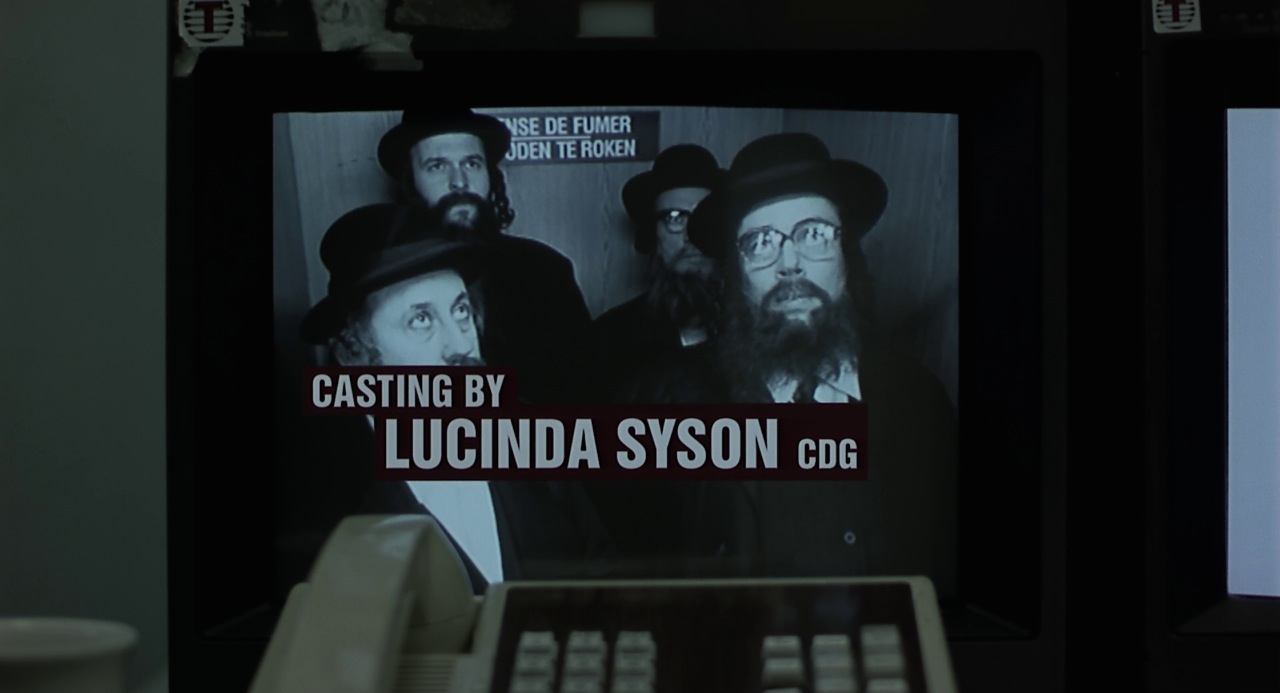Snatch (2000)

Guy Ritchie's feature film Snatch, explores the dark and gloomy, masculine realm of Britain's underground crime scene, with merciless crime lords, clueless jewel thieves, and a bare knuckle boxing champion known as Mickey. During the opening scene of this film, a group of Orthodox Jews are seen making their way throughout a building by a series of security camera monitors. As the group makes their way throughout the building, they are seen casually walking down hallways and riding in an elevator to some undisclosed location. By viewing the group from security cameras, the audience is given a sense that this group is in a top-secret place with a “high level” of security, and the main camera’s movement of trucking laterally and rising vertically from monitor to monitor helps keep the continuity with the group as they make their way throughout the building. Later on in the movie with the first bare-knuckle boxing match, Gorgeous George ends up getting knocked out by Mickey with a single punch to the face. Looking down on Gorgeous George’s body from a bird’s eye view, the camera slowly lifts up while rotating in a spiral fashion. This shot views Gorgeous George from a high angle to show that he lacks all control in this situation; the spiraling motion resembles the cartoon animation of birds circling overhead when a character has received blunt force trauma to the head. During Mickey’s last fight, there is a sequence of really quick shots which show him getting beaten to the point where he enters a dream-like state. Within this dream-like state, Mickey is submerged under water and floats in slow motion, while in reality he is laying on the floor of the boxing ring, seemingly out of the fight. In this sequence of shots, the technique of cross-cutting is used to show that the movements of Mickey’s body in the water is happening at the same time he’s lying on the floor of the boxing ring. The slow motion shots of Mickey in the water contrasted with the fast shots of everybody in reality helps gives the impression he has officially lost the fight, since time appears to be distorted and everybody is anxiously waiting to see if Mickey will get up. Within Guy Ritchie’s Snatch, special filming techniques for movement are used to highlight the decrepit, masculine traits of the unethical and corrosive crime scene in underground Britain.


Amélie (2001)

Jean-Pierre Jeunet’s motion picture Amélie, on the other hand, offers the beautiful feminine insight of a shy, but caring waitress who chooses to change the lives of those around her for the better through the decisions she makes on a daily basis. The opening sequence in this film gives the audience an important piece of information that will persist throughout the duration of the film, and that’s that Amélie enjoys the little things in life. Some of the examples from the introduction include her enjoyment from pushing one domino and watching the rest fall down, pushing her face against a window to distort the way her face looks, and her blowing on a blade of grass to hear the sound it makes. All of the shots in this sequence last for about five seconds, and are split up using really quick cuts to fit in the many examples of Amélie’s enjoyment and appreciation for the little things in life. Later on, after finding a photo album in the middle of the street, the shy waitress is determined to do the right thing and return it back to its owner. Dressed incognito, she calls the owner - whom she comes to find out is named Nino - via a public phone and leads him on a chase to the base of the Basilique du Sacré-Cœur. The camera closely follows Nino in this scene as he quickly travels along both the physical directions Amélie has left for him, as well as his curiosity to discover the identity of his mysterious and quirky admirer. In the final scene of the movie, Nino and Amélie take a fun-filled ride on his motorcycle through the streets of Paris. While on the ride, the shots are really short and fast-paced to mimic the thrill of the action taking place. The shots are also deliberately bumpy to remind the viewers of the beautiful cobblestone paved streets that wind around the city, but more importantly, that love can be a bumpy road, as Amélie has come to find out. Amélie has her arms wrapped affectionately around Nino’s waist and her head resting on his shoulder to show her love and adoration for her new boyfriend. Jean-Pierre Jeunet’s romantic comedy Amélie uses many special movement techniques to keep the fast-paced action of a shy waitress’ chase for love alive in the exciting, passionate city of Paris.


No comments:
Post a Comment